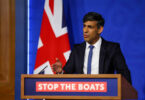Monitoring Desk
Amid the coronavirus pandemic, many countries worldwide continue to restrict entry and most travel remains discouraged. DW Travel offers a brief recap of what rules apply in the EU — and how to get the latest info.
The European Union
Several European Union nations, including Belgium, France, Portugal and Finland, have announced new travel or entry regulations. This follows discussions among EU leaders about restricting nonessential trips across the bloc’s internal borders to contain the spread of the coronavirus, particularly the mutant strains emerging from the UK, South Africa and Brazil. Though travel into the EU is already severely restricted, beginning Sunday January 24, anybody arriving from outside the EU — possible only for those with essential reasons — would have to have a test for COVID-19 before departure. To combat the virulent UK strain, the EU has already blocked all but freight or travelers on essential trips from entering the bloc from Britain.
Detailed information is available on the European Commission website.
Complete information and resources for each of the individual 27 EU member states is also available on the EU’s Reopen EU website.
However, each EU country maintains its own standards for deciding whether and how citizens of third countries may enter if they are already in an EU or Schengen country. Each EU member state also decides and implements its own further measures to curb the spread of the pandemic, such as quarantines upon entry from another region or country. Local regulations also differ widely on various social distancing measures, curfews and mask-wearing requirements.
Understanding the EU coronavirus traffic light system
In order to provide travelers in Europe with a better overview of the corona infection situation and possible restrictions, the EU has introduced a coronavirus traffic light system . According to this, the EU is divided into green, orange and red zones. In addition, there is the color gray for regions from which not enough data are available. Currently, the color red dominates the continent.
If you still have to travel, the EU Commission’s Re-open EU App can also help. It provides up-to-date information on the health situation, safety precautions, and travel restrictions for all EU countries and the members of the border-free Schengen area, which includes Iceland, Liechtenstein, Norway, and Switzerland.
Please note: The information listed here is not exhaustive, serves as a reference only and is subject to change at any time. All travelers to and within Europe, the EU and the Schengen Area are strongly advised to keep informed with the official guidance and regulations of local, state and national authorities of the relevant countries.
Europe’s five most-visited countries: Germany, France, UK, Italy, and Spain
Germany, along with France, Spain, Italy and the United Kingdom, is among the world’s 10 most-visited countries, according to the UN World Tourism Organization. Travel to France, Spain, Italy and the United Kingdom remain heavily restricted.
Germany
There is a ten-day quarantine requirement as well as a testing requirement when entering the country from foreign risk areas. TheGerman government has also imposed even stricter entry rules for more than 20 countries with particularly high infection rates, a large proportion of them in Europe, including popular vacation destinations such as Spain and Portugal.
Travelers arriving from high-risk or virus-variant areas, i.e., areas where highly contagious virus variants have spread (currently: Brazil, South Africa, Portugal, Ireland, Great Britain and Northern Ireland), even have to present a negative test result before entering the country. Only then are they allowed to board an aircraft. The same applies to buses, trains and ferries. In addition, there are the quarantine rules set individually by the 16 German states. Travelers are therefore well advised to inform themselves accordingly.
Throughout Germany a lockdown has been in effect since mid-December: Schools and daycare centers are largely closed, as are stores and restaurants. Private meetings are only allowed in one’s own household and with a maximum of one other person. In places with a particularly high incidence (more than 200 new infections per 100,000 inhabitants within a week), the radius of movement is restricted to 15 kilometers (9.3 miles) around the place of residence. Nighttime exit restrictions also apply in some states.
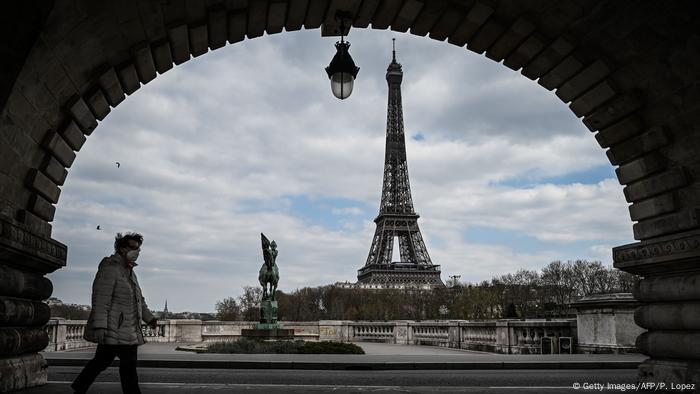
France
The world’s top tourism destination country by arrivals, France has continued to heavily restrict entry to foreign citizens. Complete information is available on the French Foreign Ministry website. In addition to travelers from non-EU countries, travelers from European countries must now also provide proof of a negative PCR test, which must not be older than 72 hours. There are exceptions for those who live in border areas and those transporting goods. France has already twice implemented strict curfews lasting weeks. With the virus mutation spreading in the UK, many experts are calling for a third lockdown. Stores and schools are largely open in France, while restaurants are closed. Across the country, a nighttime curfew is now in effect from 6 p.m. to 6 a.m. Supermarkets close then, walking and outdoor sports are prohibited.
United Kingdom
People travelling to the UK must show proof of a negative COVID-19 test before setting off. This may be taken up to three days before their journey begins. Even with the new testing requirements, travelers (including UK nationals) must still self-isolate for 10 days on arrival. People arriving from dozens of countries on the UK’s list of travel corridors are no longer exempt from quarantine, following the decision to suspend them until at least February 15. All travelers must provide contact details and their UK address. However, the guidance differs for England, Northern Ireland, Scotland and Wales.
All travelers entering the UK, regardless of departure country or nationality, must complete a passenger locator form. The third lockdown is in effect across the UK until February 22. In England, people are not allowed to leave their homes without a valid reason. Schools, universities and all businesses not considered essential are closed.
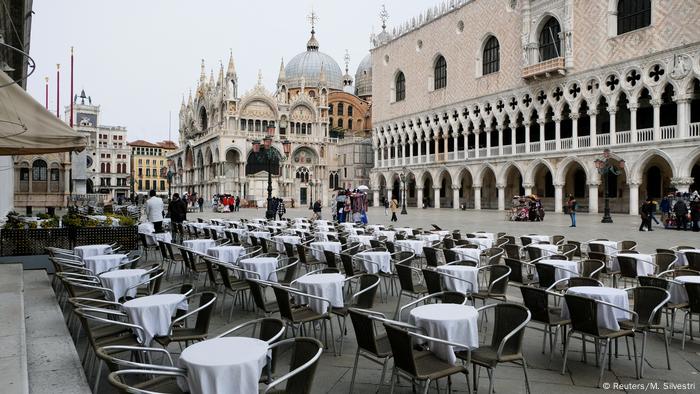
Italy
The country has extended its state of emergency until April 30, and entry from abroad remains heavily restricted. Complete information is available at the Italian Foreign Ministry website. Entry from most of Europe is allowed but persons arriving from these countries must must report to the local health authorities on arrival and provide a negative COVID-19 test result taken within 48 hours. They are also required to fill in a self-declaration form. Arrivals from the United Kingdom (other than Italian residents) are banned until at least March 5, and until January 31, nobody who has been in or transited through Brazil in the last 14 days may enter Italy (not even Italian residents). In addition, flights to and from Brazil have been banned. In view of the continuing high number of new infections, a daily curfew from 10 p.m. to 5 a.m. is currently in effect for all of Italy. Museums, theaters, cinemas and tourist attractions remain closed. Only grocery stores, banks, the post office and pharmacies are open. Ski resorts are not scheduled to open until February 15 at the earliest.
Spain
The country permits unrestricted entry from the EU, the Schengen Area and a small list of third countries, but has suspended incoming flights from Great Britain since December 22. The country’s official tourism website provides complete information and resources. Spain has been particularly hard hit by the pandemic. A state of alert is in effect throughout the country until May 9, allowing autonomous communities (regions) to impose nighttime curfews and movement restrictions and limit gatherings, depending on the infection situation. As a result, different rules apply throughout the country. Restaurants are mostly allowed to either sell only outside or serve only outside. Many health clubs are closed, and theaters, concert halls and movie theaters are allowed to occupy only a fraction of their seats, if at all. Individual coronavirus hotspots are completely sealed off.
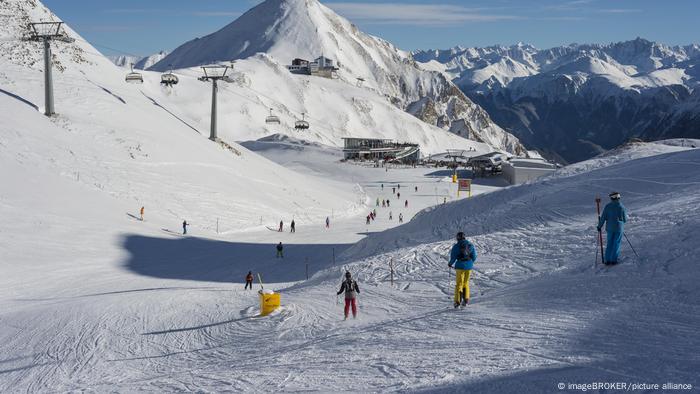
Recent travel restrictions in selected countries across the EU
Austria
Entry into Austria is possible in principle, but a ten-day quarantine obligation applies to all entrants from coronavirus risk areas. This currently affects all neighboring countries, including Germany. In general, digital registration has been mandatory since January 15, with the exception of regular commuters and transit travelers. In view of the rising coronavirus infection figures, a strict lockdown is in effect in Austria until February 8. Stores, museums and schools are closed, with only grocery stores, pharmacies and drugstores exempt. In stores and public transport, people older than 14 years must wear a FFP2 mask from January 25. The development of infection figures will determine whether retailers and museums will be allowed to reopen as planned from February 8 under strict conditions.
The Alpine country made headlines with the opening of its ski slopes on December 24. The images of people queuing at the lifts and crowded slopes triggered a wave of indignation. However, due to the quarantine rules for arrivals, the winter sports activities are mainly aimed at locals, who are urged to wear facemasks when queuing at the cable cars and lifts and to maintain social distancing.
The Netherlands
The Dutch government “strongly advises” against all travel to the country unless it is strictly necessary, and has stepped up travel restrictions as of January 23. From this date on, people traveling to the Netherlands not only need a negative result of a PCR test taken within 72 hours of arrival in Holland, but now also need a negative result of an antigen rapid test, or LAMP (loop mediated isothermal amplification) test taken within 4 hours before departure to the Netherlands. Furthermore, all travelers are expected to quarantine for 10 days upon arrival in Holland. After five days of quarantine, you can choose to get tested for coronavirus. If you test negative, the quarantine is lifted.
Find more information here .
Faced with dramatically rising infection numbers, the Netherlands has imposed the toughest lockdown yet on its country since the pandemic began. Schools, most stores and restaurants are closed. Private contacts are limited to one person outside one’s household. Since January 23, there has also been a nighttime curfew from 9 p.m. to 4:30 a.m. for the first time. In addition, the sale of alcohol and soft drugs is prohibited between 8 p.m. and 6 a.m., as is consumption in public. Coffee shops must close at 8 p.m. This will initially apply until February 9.
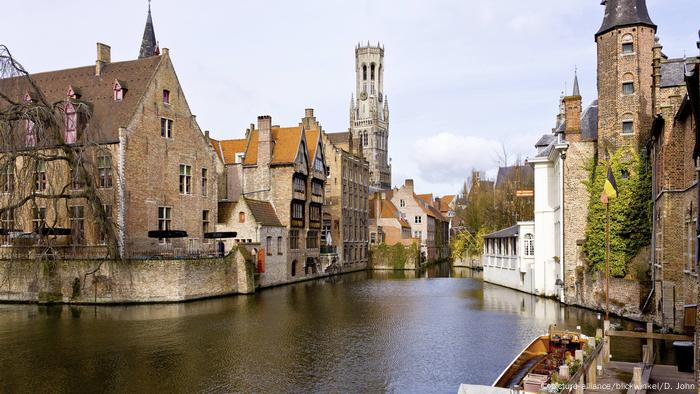
Belgium
Starting on January 27, people traveling to and from Belgium will have to provide a valid reason — such as family duties, work or studies — to be allowed to cross Belgian borders.
Also beginning on Monday, January 25, all Belgians returning from Britain, South America or South Africa are required to quarantine for 10 days and take a PCR test on the first and seventh day after arrival. Additionally, non-residents who wish to come to Belgium will have to present two negative PCR tests, one before departure and one upon arrival.
Currently citizens and residents returning to Belgium must take a COVID-19 test on arrival, self-isolate for a week and then take another test. All other arriving passengers also need to show a negative test.
Portugal
Portugal has been particularly hard hit by COVID-19. The mainland and the autonomous regions of the Azores and Madeira have been classified as high-risk areas since January 24. To stem the spread of the UK variant, flights to and from the United Kingdom have been suspended since January 23. Entry into Portugal via other routes is possible. Travelers need to provide personal information about their destination, reason for travel and their contact details during their stay in Portugal. The multilingual entry card is retained by the airlines. In Portugal daycare centers, schools and universities are closed, and the government has imposed a new nationwide lockdown with even stricter exit restrictions. This has been in force since January 20, initially for one month, and is intended to ensure that the British variant of the virus does not spread further. People are only allowed to leave the house for a valid reason. Restaurants and stores — except for those supplying food and basic daily needs — must remain closed.
Greece
Greece was one of the first countries to open back up to tourism last summer. Entry into Greece is subject to online registration, and a negative PCR test no more than 72 hours old must be available. Through February 8, all travelers will be required to self-isolate for 7 days upon arrival. The Greek government has ordered a lockdown for the entire country, which has been extended until February 1. Masks are mandatory throughout the country, including outdoors. After months of shutdown, all stores have been allowed to receive customers again since January 18, but only one person per 25 square meters (269 square feet) of store space. On the other hand, a general curfew from 9 p.m. to 5 a.m. continues to apply. During the day, people are only allowed to leave their homes for a valid reason. Visit Greece provides a summary of all the important information.
Ireland
The situation in Ireland is particularly dramatic. The Republic now has the highest number of new infections per capita in the world. After a temporary easing of the nationwide lockdown before Christmas, the infection figures there, fueled by the highly contagious COVID-19 variant, are rising unchecked, and severe restrictions are once again in place.
Ireland is currently under a national lockdown which will last until at least the end of January. The Irish government advises against all but essential travel. Anyone entering Ireland must present a negative PCR test no more than 72 hours old. In addition, all entrants, including Irish citizens and residents, are required to severely restrict their movements for 14 days after entry. Public transport capacity is reduced to 25%, and at peak times, use of public transport is reserved for essential workers. Travel outside a five-kilometer radius of residence and between counties is to be avoided. The wearing of masks is compulsory in stores and on public transport, with fines of up to €2,500 ($3,040) for non-compliance.
Courtesy: DW



